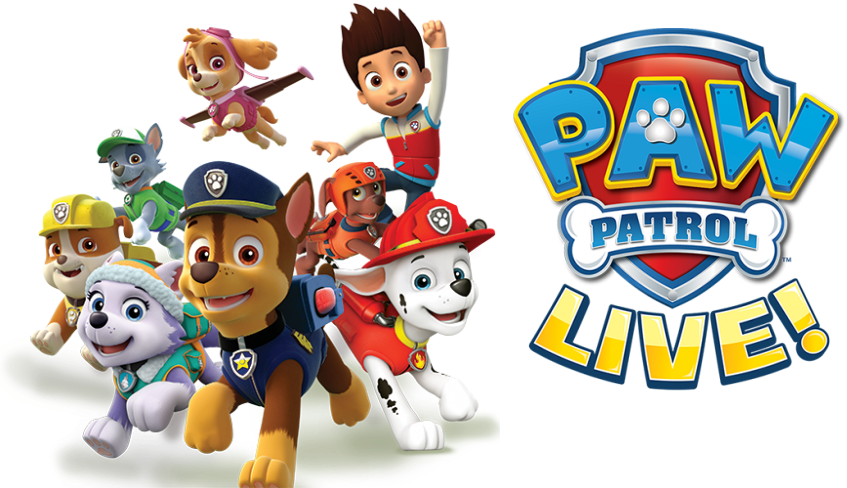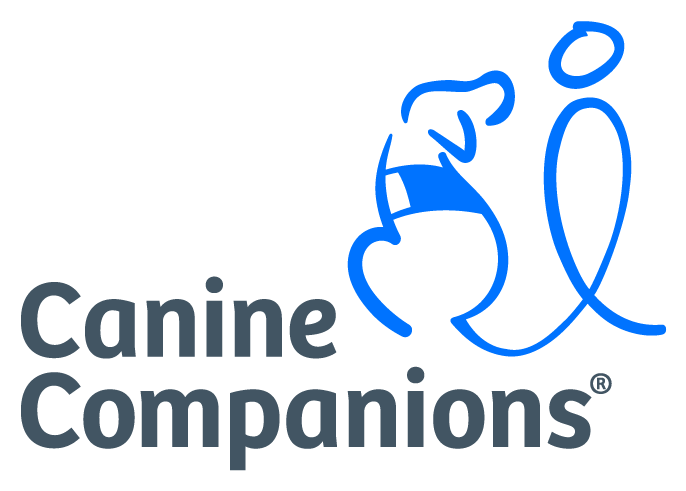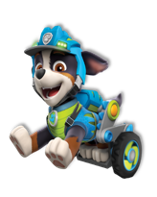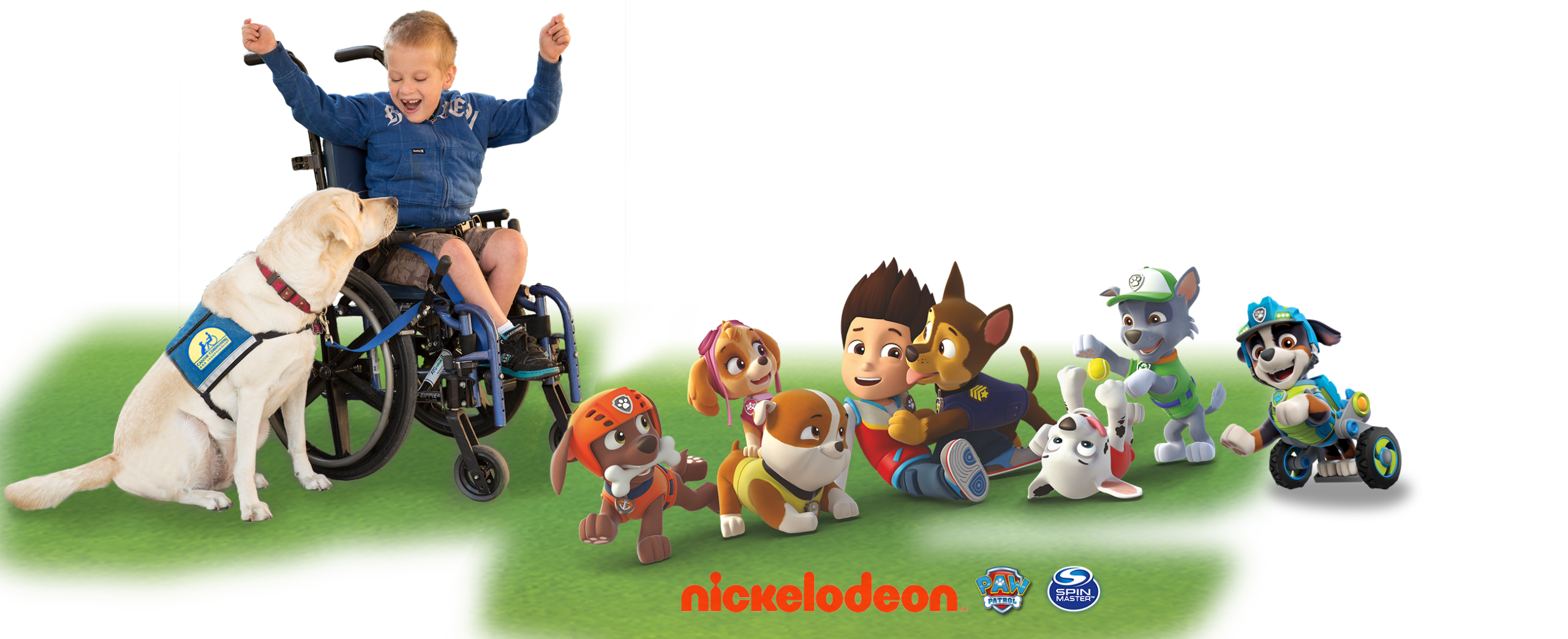
Paw Patrol
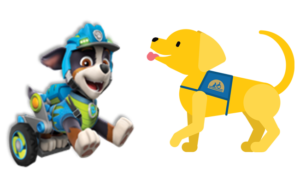
Rex and Indy Chat About Disabilities and Assistance Dogs
It’s really fun to see service dogs with their human partners. While we like to look at these awesome dogs and even want to pet them, there are some rules to follow.
Check out these tips below shared by Rex and Indy. Just click on the question and the answer will show up below!
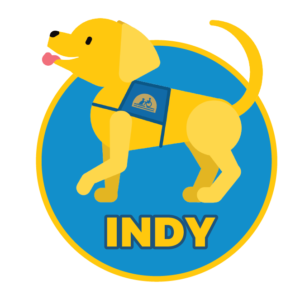 You don’t want to touch the dog without asking permission first. This is a distraction and may prevent the dog from helping its human partner. Be aware that the dog is working and may be in the middle of a command or direction from its partner. Most dogs need to be told a command to switch from work mode to interact with another person.
You don’t want to touch the dog without asking permission first. This is a distraction and may prevent the dog from helping its human partner. Be aware that the dog is working and may be in the middle of a command or direction from its partner. Most dogs need to be told a command to switch from work mode to interact with another person.
 Many people who use wheelchairs and other equipment feel like their wheelchair is a part of their body. You don’t want to touch a person’s equipment, like a wheelchair or crutches, unless they’ve given you permission.
Many people who use wheelchairs and other equipment feel like their wheelchair is a part of their body. You don’t want to touch a person’s equipment, like a wheelchair or crutches, unless they’ve given you permission.
 You can admire the person with their assistance dog from afar but if you’d like to learn more, you can approach and speak to the person directly. Most handlers do not mind talking about assistance dogs and their dog specifically if they have the time. In fact, they often enjoy it! But be sure to ask before petting or speaking directly to the dog. The dog needs permission from its human partner before interacting with you.
You can admire the person with their assistance dog from afar but if you’d like to learn more, you can approach and speak to the person directly. Most handlers do not mind talking about assistance dogs and their dog specifically if they have the time. In fact, they often enjoy it! But be sure to ask before petting or speaking directly to the dog. The dog needs permission from its human partner before interacting with you.
 Please don’t feed the dog. It may be on a special diet. Food is the ultimate distraction to the working dog and can jeopardize the working assistance dog team.
Please don’t feed the dog. It may be on a special diet. Food is the ultimate distraction to the working dog and can jeopardize the working assistance dog team.
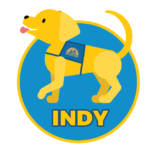 You can admire the person with their assistance dog from afar but if you’d like to learn more, you can approach and speak to the person directly. Most handlers do not mind talking about assistance dogs and their dog specifically if they have the time. In fact, they often enjoy it! But be sure to ask before petting or speaking directly to the dog. The dog needs permission from its human partner before interacting with you.
You can admire the person with their assistance dog from afar but if you’d like to learn more, you can approach and speak to the person directly. Most handlers do not mind talking about assistance dogs and their dog specifically if they have the time. In fact, they often enjoy it! But be sure to ask before petting or speaking directly to the dog. The dog needs permission from its human partner before interacting with you.
 That’s a great question! Canine Companions assistance dogs spend two years training to become expertly trained best friends to kids and adults with disabilities. These amazing dogs are trained in over 40 commands. That means they can do more than 40 different things for their human partner. They can open and close doors, carry lunch boxes, pick up books and pencils and other things kids might drop and so much more! To learn more about what these dogs can do, visit our dogs page.
That’s a great question! Canine Companions assistance dogs spend two years training to become expertly trained best friends to kids and adults with disabilities. These amazing dogs are trained in over 40 commands. That means they can do more than 40 different things for their human partner. They can open and close doors, carry lunch boxes, pick up books and pencils and other things kids might drop and so much more! To learn more about what these dogs can do, visit our dogs page.
 Just like asking to pet the dog, you don’t want to touch the dog without asking permission first. This is a distraction and may prevent the dog from tending to its human partner. Be sensitive to the fact that the dog is working and may be in the middle of a command or direction from its partner. Most dogs need to be told “release” from work mode to interact with another person.
Just like asking to pet the dog, you don’t want to touch the dog without asking permission first. This is a distraction and may prevent the dog from tending to its human partner. Be sensitive to the fact that the dog is working and may be in the middle of a command or direction from its partner. Most dogs need to be told “release” from work mode to interact with another person.
 While it’s very kind to want to help someone with a disability, always ask whether they want your help first. If they do want help, ask how you can best assist them. If a person doesn’t want help, don’t worry! People with disabilities like to do activities independently, just like you!
While it’s very kind to want to help someone with a disability, always ask whether they want your help first. If they do want help, ask how you can best assist them. If a person doesn’t want help, don’t worry! People with disabilities like to do activities independently, just like you!

Tug
Grab an item while walking backwards to pull it

Light / Switch
Turn a light on with nose or off with paw

What?
Lead the handler to the source of a sound

Get
Retrieve an item and hold it until commanded

Hold
Hold and carry an item in the mouth until commanded

Up
Put two front feet up to deliver an item
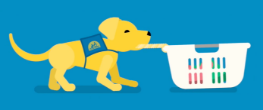
Jobs That Give Independence
24 hours a day, 7 days a week, Canine Companions for Independence assistance dogs are there for their human partners with disabilities. Expertly trained to perform over 40 commands these dogs help children, veterans and adults with disabilities open doors, pick up dropped items and much more. Thanks to donors like you, each life-changing dog is provided free of charge to recipients.
Meet Dogs With Jobs
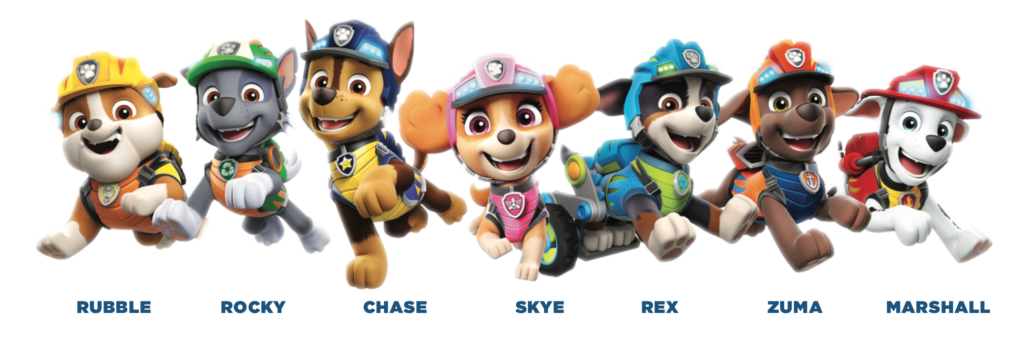
Meet LanDan Olivia and her expertly trained assistance dog Perkins. They are a Canine Companions® graduate team working together for greater independence.
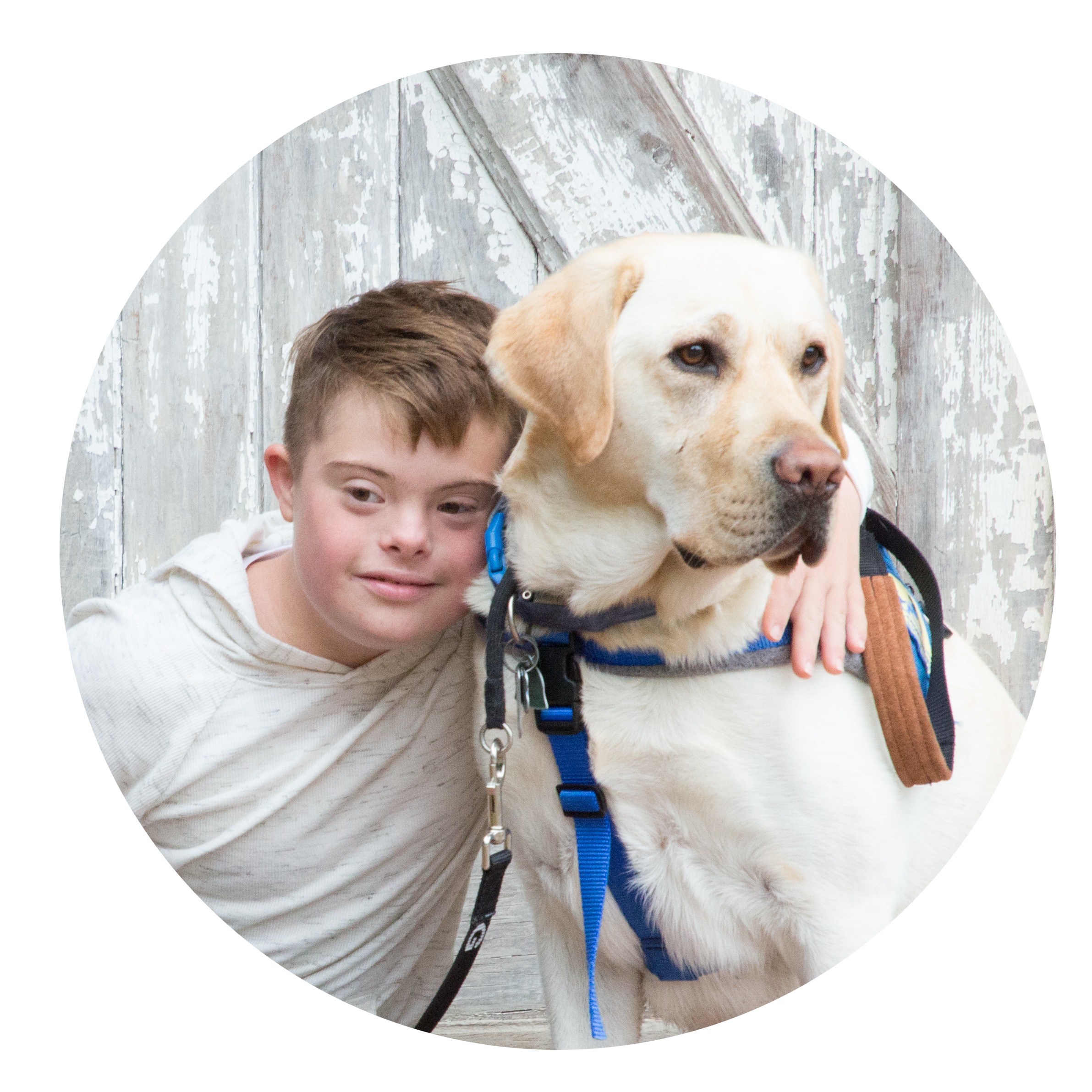
Luke & Ruff
With assistance dog Ruff by Luke's side the sky's the limit. Luke has Down Syndrome, creating cognitive and physical delays. Staying on task, speech and socialization are difficult for Luke. After being matched with Ruff, Luke is making great strides.
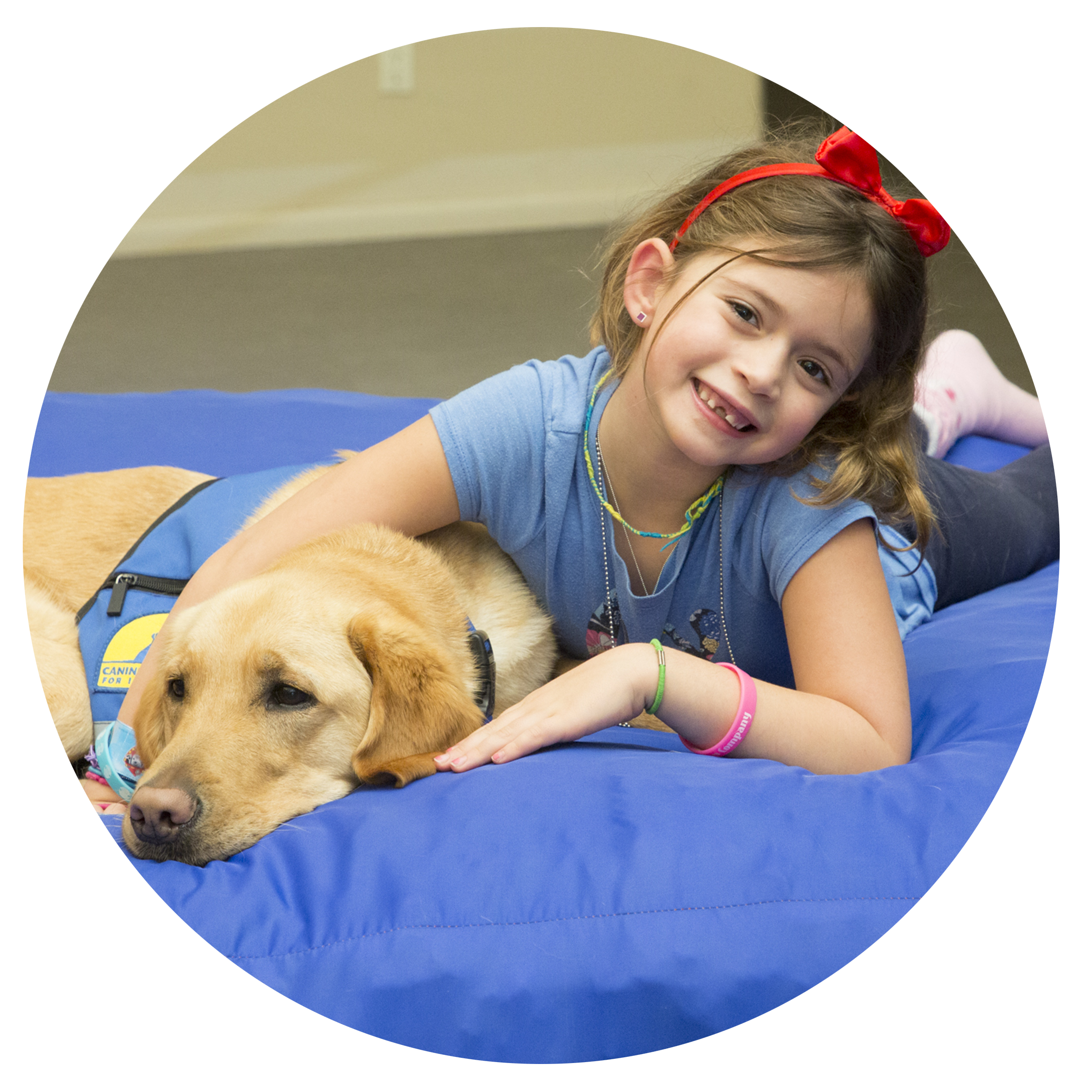
LuLu & Zuke
LuLu is a smart, energetic 7-year-old who needs to stay active and exercise to help manage the progression of two rare genetic conditions. Assistance dog Zuke helps LuLu move more and participate in the activities she enjoys most.
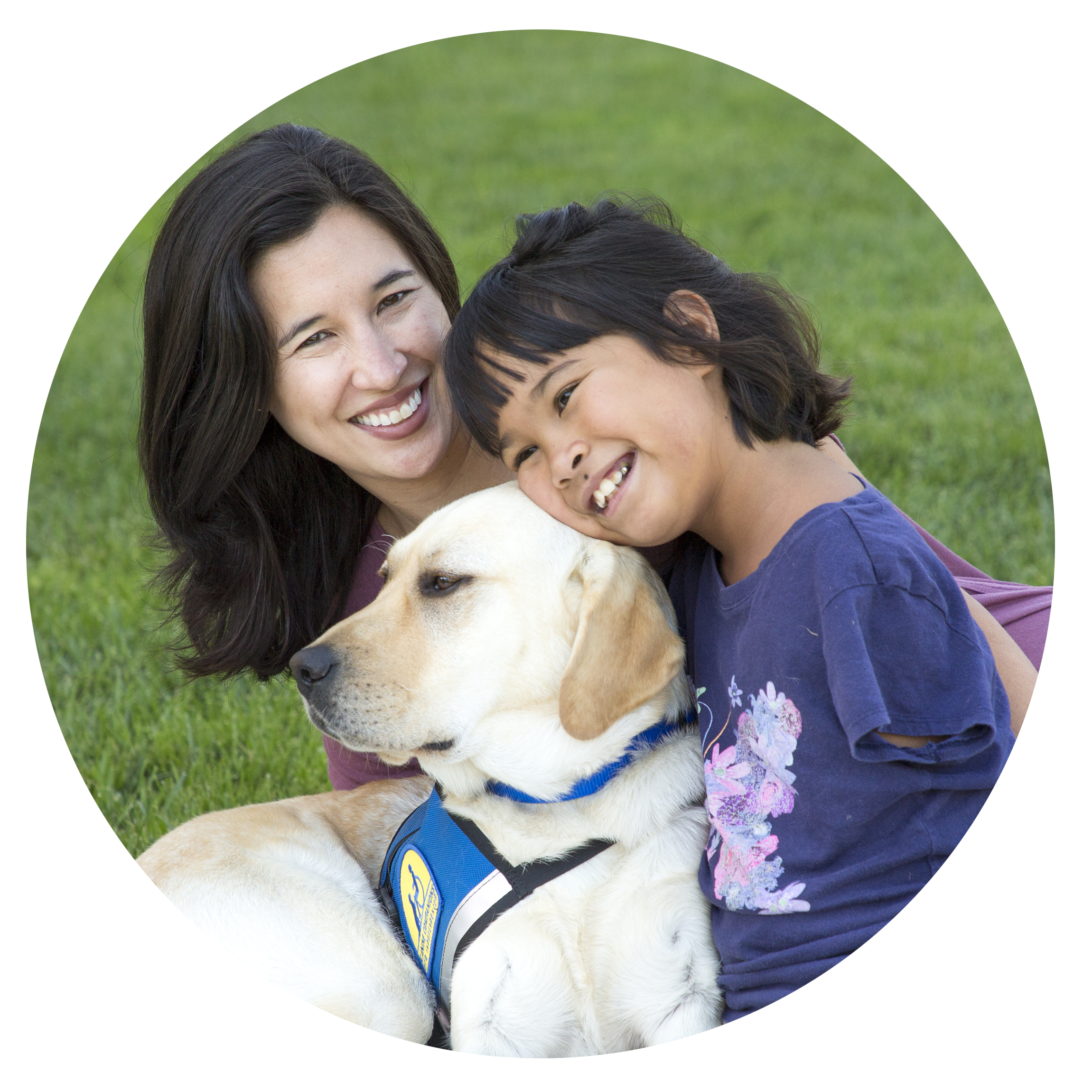
Nu Ja & Kristi
Nu Ja was born with limb differences in her arms and legs, meaning they are either absent or incomplete; however, this rarely slows her down. Assistance dog Kristi helps Nu Ja get ready for school and attend Girl Scout troop outings.
Get Involved
Start your own fundraiser, color a PAW Patrol coloring page, make your dog a tug toy or adopt your very own official plush Canine Companions puppy training to be an assistance dog to help a person with a disability. Learn more about volunteering.
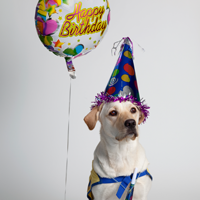
Start a Fundraiser
Dedicate your birthday or holiday to collect donations. Host a dog wash. Organize a bake sale. Get ideas and much more on the DIY fundraising site.
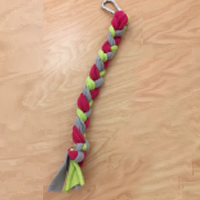
Make a Tug Toy
Working dogs use tug straps to help them open doors and drawers. Download these instructions to make your very own tug strap toy for your dog!
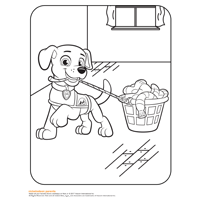
Color and Share
Show us your creativity by coloring in this PAW Patrol coloring sheet. Share your masterpiece by tagging Canine Companions on Facebook, Twitter and Instagram and using the hashtags #giveadogajob and #pawpatrol.
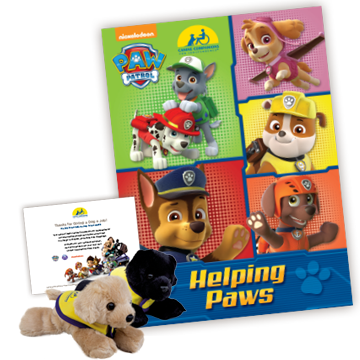
Get a FREE PAW Patrol Coloring Book
Make a donation of $25 or more and receive a plush pup with a certificate and get a FREE PAW Patrol coloring book!
Check Out Our PSA From Nickelodeon!
Give a Dog a Job
No job is too big. No pup is too small.
Canine Companions for Independence is partnering with Nickelodeon’s PAW Patrol pups from Adventure Bay and Dino Rescue!
The PAW Patrol are the heroes of Adventure Bay and Dino Rescue, but today they want you to meet some other heroes. The assistance dogs of Canine Companions for Independence.
From Puppy to Assistance Dog
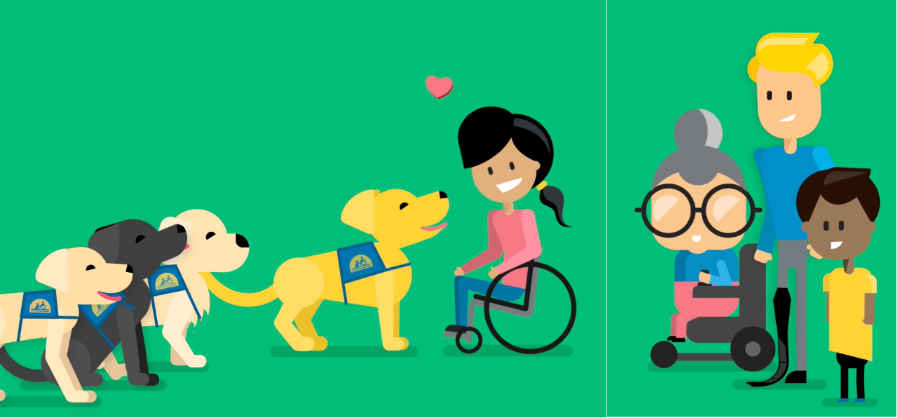
Have you ever wondered how a puppy becomes an assistance dog or how an applicant becomes a graduate? Here’s a great video to show the process and how our organization works.
Canine Companions is joining the fun on the PAW Patrol LIVE tours "Race to the Rescue" and "The Great Pirate Adventure."
